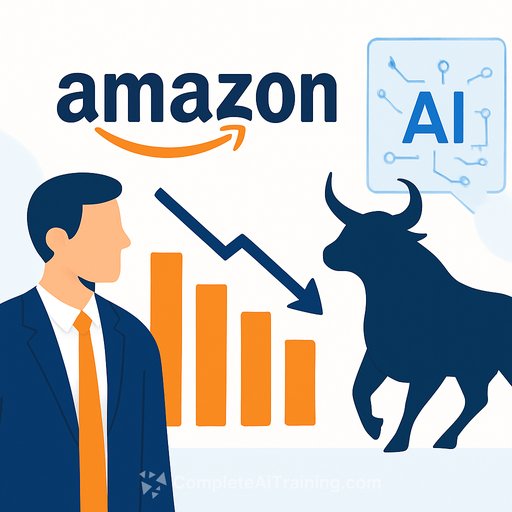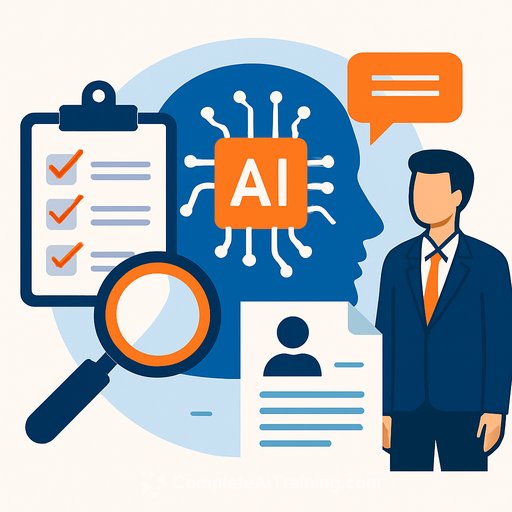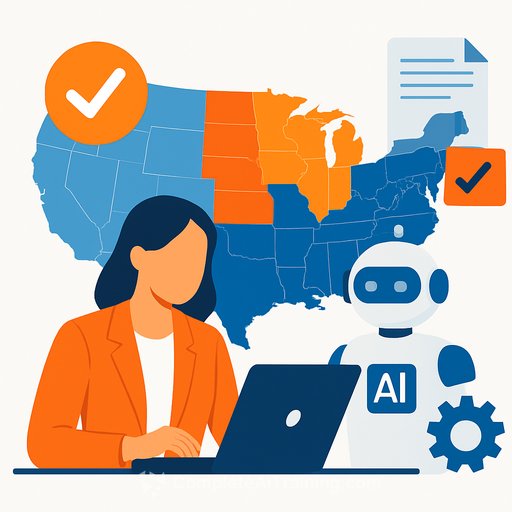Amazon's AI-Fueled HR Cuts: What HR Leaders Need To Do Now
Reports indicate Amazon will reduce up to 15% of its global People eXperience & Technology (PXT) workforce, the recruiting and HR tech organization of 10,000+ employees. Additional reductions may hit other corporate units, while the company still plans to hire ~250,000 U.S. seasonal workers for fulfillment.
The message is clear: AI efficiency is replacing portions of corporate work, while front-line capacity remains protected for peak demand. Amazon plans to invest over $100B in 2025 for data centers, cloud, and AI, and leadership has warned that some roles will need fewer people as automation scales.
Key facts at a glance
- PXT expected to be most affected; timing and exact counts not disclosed.
- Holiday hiring remains ~250,000 in the U.S., focused on warehouses and logistics.
- Q2 2025: net sales +13% to ~$167.7B; AWS +17% (~$30.8B); advertising ~+20%; operating margin ~13%.
- Q3 revenue guide: $174-$179.5B (+10-13% YoY).
- Stock: AMZN near $216 on Oct 14, 2025; most analysts rate "Buy" with ~15% average 12-month upside.
What this means for HR
Corporate headcount is shifting from volume recruiting and transactional HR to a smaller set of high-leverage roles that build, run, and govern AI-enabled processes. HR leaders should expect fewer reqs, faster cycles, and higher expectations on service quality with tighter teams.
The next advantage comes from operating model design: AI-first workflows, redeployment of talent, and disciplined governance that protects privacy and fairness.
Immediate 90-day actions
- Workforce plan: identify roles most exposed to automation (sourcing, screening, ticket triage, HR ops). Freeze backfills where AI can cover within 1-2 quarters.
- Redeploy talent: move recruiters and HR ops into People Analytics, HR knowledge management, AI product operations, change management, and vendor PMO.
- Tech stack audit: consolidate overlapping tools; prioritize platforms with embedded AI for recruiting, knowledge search, and case deflection.
- Set AI guardrails: define usage, data privacy, bias testing, human-in-the-loop, and incident response with Legal, Security, and IT.
- Service model: implement AI-first self-service and tiered support; route exceptions to specialists.
- Scorecard: track cost-to-serve/employee, time-to-fill, acceptance rate, case deflection, and quality-of-hire proxies.
Six-month operating model shift
- Job architecture: fewer generalist recruiters; more HRIS/AI product owners, automation analysts, and program managers.
- Comp and incentives: link bonuses to automation savings, SLA adherence, and quality outcomes instead of req volume.
- Change communications: be direct about tasks that will be automated; fund reskilling and publish internal pathways.
- Vendor discipline: launch small pilots with clear hypotheses; kill non-performers quickly; scale winners.
Signals to watch
- Amazon earnings on Oct 30: updates on capex, corporate headcount, and AI productivity comments.
- AWS and ads growth: sustained double-digit trends support continued lean corporate staffing.
- Peer actions: sector-wide HR/recruiting reductions tied to AI and cost efficiency.
Context across tech
Layoff trackers show over 180,000 tech jobs cut in 2025 so far. Large reductions at firms like Intel, Microsoft, and Salesforce are also tied to AI-driven productivity and cost resets.
Practical automations HR can implement now
- Recruiting: programmatic sourcing, resume screening, interview scheduling, candidate Q&A assistants.
- Employee services: AI knowledge search, case intake classification, response drafting, policy chat.
- People analytics: attrition risk flags, headcount and cost forecasting, req prioritization.
- Learning: adaptive paths for managers and HR on safe AI use and policy adherence.
Budget implications
Shift 10-20% of HR opex from headcount and agencies to AI-enabled platforms and data engineering. Fund reskilling for impacted roles and reduce external recruiter/RPO spend as automation coverage expands.
Risk controls to put in place
- Bias and fairness: run pre-deployment and ongoing audits; document mitigation steps.
- Data protection: prevent shadow IT; restrict model access; log all employee-facing automations.
- Trust: consistent, transparent communication; align actions with stated policy and severance commitments.
Stand up a cross-functional AI governance group (HR, Legal, Security, IT). Use a model registry, testing protocols, and audit trails for hiring and employee service use cases. For compliance guidance, see the U.S. EEOC's technical assistance on AI and Title VII: EEOC AI guidance.
Upskill your HR team
If you are refactoring roles around AI, start with short, applied programs. Explore targeted options here: Courses by job and the latest additions here: Latest AI courses.
Bottom line
Amazon's plan signals a new operating baseline: leaner corporate teams, AI-driven throughput, and capital funneled into cloud and data centers. Treat this as a prompt to rebuild HR for speed, accuracy, and measurable outcomes while protecting trust and compliance.
For official performance and guidance updates, monitor Amazon Investor Relations: ir.aboutamazon.com.
Your membership also unlocks:






